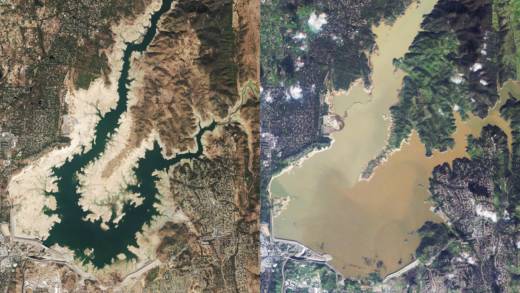Amazing the difference a little rain makes. Wait — a little? No — a lot.
Virtually all of California is enjoying its wettest winter in five years. In fact, current statistical reports on rainfall and the water content of the Sierra Nevada snowpack show that so far, we’re in the midst of one of the wettest California rainy seasons on record.
All the precipitation has transformed a state that suffered through five years of severe drought. One of the most visible effects: high levels of the state’s major reservoirs.
Below are comparative views of three of those massive storage facilities: Folsom Lake, on the American River about 25 miles northeast of downtown Sacramento; Shasta Lake, the state’s largest reservoir, just north of Redding; and San Luis Reservoir (bottom), near the town of Los Banos in the San Joaquin Valley.
We’ve chosen satellite images from San Francisco-based Planet Labs that illustrate the reservoirs near their drought low points and as they’ve appeared this month. Additional notes on each of the reservoirs below.

